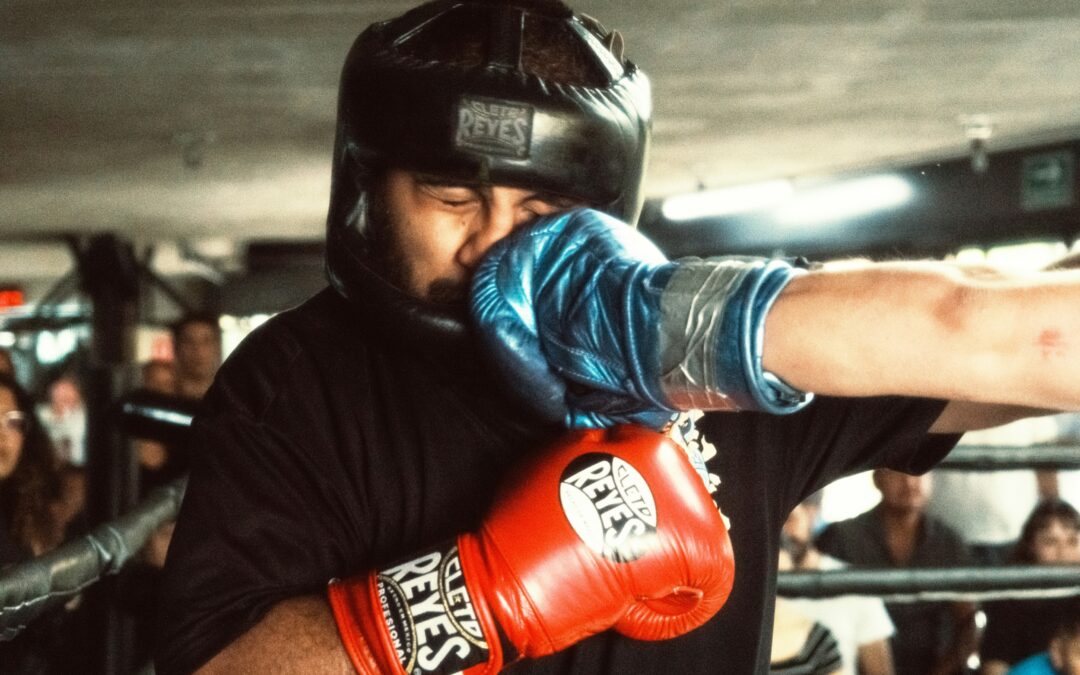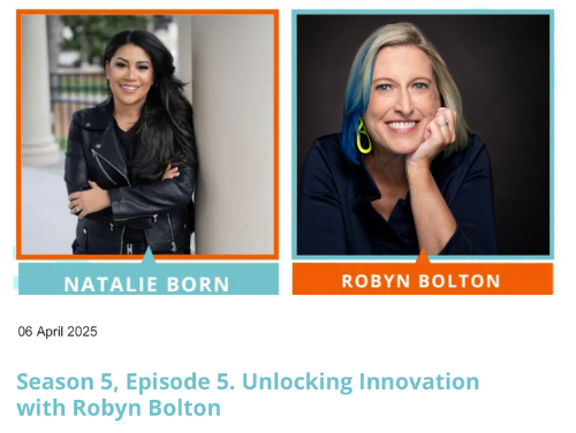
by Robyn Bolton | Apr 15, 2025 | Innovation, Leadership
“The call is coming from inside the house” is one of those classic quotes that crossed over from urban legend and horror movies to become a common pop-culture phrase. While originally a warning to teenage babysitters, recent research indicates that it’s also a warning to corporate execs that murderous business threats are closer than they think.
In the early weeks of 2025, Box of Crayons, a Toronto-based learning and development company, partnered with The Harris Poll to survey over 1500 business leaders and knowledge workers to diagnose and understand the greatest challenges facing organizations.
They found that “while there is a tendency to focus on external pressures like economic uncertainty, technological disruptions, and labor market issues, our research shows the most critical challenges are unfolding within the workplace itself.”
The threat is coming from inside your house.
Here’s what they found and what you can do about it
Nearly 1 day each workweek “is lost to the fear of making mistakes.”
Fear is at the core of all the issues making headlines – burnout, disengagement, lost productivity. It “breeds doubt, prompting individuals to question themselves and others, instigating anxiety, hindering productivity, and promoting blame instead of teamwork.”
Fear is also a virus, spreading rapidly from one person to their team members and on and on until it infects the entire organization, embedding itself in the culture.
Executives and managers are key to breaking the cycle of fear that kills innovation, initiative, and growth. By reframing mistakes and learnings, rewarding smart risks even if they result in unexpected outcomes, and role-modeling behaviors that encourage trust and psychological safety, their daily and consistent actions can encourage bravery and remaking the culture.
70% of people don’t see value in listening to people they disagree with.
Unless you’re employed by Lumon Industries, it’s impossible to be a completely different person at work compared to who you are outside of work. So, it should come as no surprise that most people no longer listen to opinions, perspectives, or evidence with which they disagree.
The problem is that different perspectives and experiences are essential to elements of the problem-solving process. Without them, we cannot learn, develop new solutions, and innovate.
Again, executives and managers play a critical role in helping to surface diverse points of view and helping employees to engage in “productive conflict.” Rather than rushing to “consensus” or rapidly making a decision, by expressing curiosity and asking questions, people-leaders create space for new points of view and role model how to encourage and use it.
87% of leaders lack the skills needed to adapt. 64% say funding to build those skills has been cut.
Business leaders are fully aware of the changes happening within their teams, organizations, and the broader world. They recognize the need to constantly adapt, learn, and develop the skills required to respond to these changes. They can even articulate what they need help with, why, and how it will benefit the team or organization.
But leadership training is often one of the first items to be cut, leaving new and experienced people-leaders “ill-equipped to manage the increasing complexity of today’s workplace, stifling their ability to inspire, guide, and support their teams effectively.”
The solution is simple – invest in people. Given the acute need for support and training, forget big programs, multi-day offsites, and centralized learning agendas. Talk to the people asking for help to understand what they want and need and how they learn best. Share what you can do right now with the resources you have and engage them in creating a plan that helps them within the constraints of the current context.
Answer the phone
Just like that terrifying movie moment, the call threatening your business isn’t coming from mysterious outside forces—it’s echoing through your own hallways. The good news? Unlike those helpless babysitters in horror films, you can change the ending by confronting these internal threats head-on.
What internal “call” is your organization ignoring that deserves immediate attention?

by Robyn Bolton | Apr 9, 2025 | Innovation, Leadership, Tips, Tricks, & Tools
“A Few Good Men” is one of my favorite movies. As much as I love Jack Nicholson’s classic line, “You can’t handle the truth!” lately, I’ve been thinking more about a line delivered by Lt. Daniel Kaffee, played by Tom Cruise – “And the hits just keep on comin’.”
But, just like Lt. Kaffee had to make peace with Lt. Cdr JoAnne Galloway joining his Cuba trip, we must make peace with uncertainty and find the guts to move forward.
This is much easier said than done, but these three steps make it possible. Even profitable.
Where We Begin
Imagine you’re the CEO of Midwest Precision Components (MPW), a $75 million manufacturer of specialized valves and fittings. Forty percent of your components come from suppliers now subject to new tariffs, which, if they stay in effect, threaten an increase of 15% in material costs. This increase would devastate your margins and could require you to reduce staff.
Your competitors are scrambling to replace foreign suppliers with domestic ones. But you know that such rapid changes are also risky since higher domestic prices eat into your margins (though hopefully less than 15%), and insufficient time to quality test new parts could lead to product issues and lost customers. And all this activity assumes that the tariffs stay in place and aren’t suddenly paused or withdrawn.
3 Steps Forward
Entering the boardroom, you notice that the CFO looks more nervous than usual, and your head of Supply Chain is fighting a losing battle with a giant stack of catalogs. Taking a deep breath, you resolve to be creative, not reactive (same letters, different outcomes), and get to work.
Step 1: Start with the goal and work backward. The goal isn’t changing suppliers to reduce tariff impact. It’s maintaining profit margins without reducing headcount or product quality. With your CFO, you whiteboard a Reverse Income Statement, a tool that starts with required (not desired) profits to calculate necessary revenues and allowable costs. After running several scenarios, you land on believable assumptions that result in no more than a 4% increase in costs.
Step 2: Identify and prioritize assumptions. With the financial assumptions identified, you ask the leadership team to list everything that must be true to deliver the financial assumptions, their confidence that each of their assumptions is true, and the impact on the business and its bottom line if the assumption is wrong.
Knowing that your head of Sales is an unrelenting optimist and your Supply Chain head is mired in a world of doom and gloom, you set a standard scale: High confidence means betting your annual salary, medium is a team dinner at a Michelin-starred restaurant, and low is a cup of coffee. High impact puts the company out of business, medium requires major shifts, and low means extra work but nothing crazy.
Step 3: Attack the deal killers. Going around the room, each person lists their “Deal Killers,” the Low Confidence – High Impact assumptions that pose the highest risk to the business. After some discussion to determine the primary assumptions at the beginning of causal chains, you select two for immediate action: (1) Alternative domestic suppliers can be found for the two highest-cost components, and (2) Current manufacturing processes can be quickly adapted to accommodate parts from new suppliers.
A Plan. A Timeline. A Sense of Calm.
With this new narrowed focus, your team sets a shared goal of resolving these two assumptions within 30 days. Together, they set clear weekly deliverables and reallocate time and people to help meet deadlines.
A sense of calm settles on the team. Not because they have everything figured out, but because they know exactly what the most important things to be done are, that those things are doable, and they are working together to do them.
How could you use these three steps to help you move forward through uncertainty?

by Robyn Bolton | Apr 6, 2025 | Podcasts

by Robyn Bolton | Apr 1, 2025 | Leadership, Stories & Examples, Strategy
If you’re leading a legacy business through uncertainty, pay attention. When The Cut asked, “Can Simon & Schuster Become the A24 of Books?” I expected puff-piece PR. What I read was a quiet masterclass in business transformation—delivered in three deceptively casual quotes from Sean Manning, Simon & Schuster’s new CEO. He’s trying to transform a dinosaur into a disruptor and lays out a leadership playbook worth stealing.
Seventy-four percent of corporate transformations fail, according to BCG. So why should we believe this one might be different? Because every now and then, someone in a legacy industry goes beyond memorable soundbites and actually makes moves. Manning’s early actions—and the thinking behind them—hint that this is a transformation worth paying attention to.
“A lot of what the publishing industry does is just speaking to the converted.”
When Manning says this, he’s not just throwing shade—he’s naming a common and systemic failure. While publishing execs bemoan declining readership, they keep targeting the same demographic that’s been buying hardcovers for decades.
Sound familiar?
Every legacy industry does this. It’s easier—and more immediately profitable—to sell to those who already believe. The ROI is better. The risk is lower. And that’s precisely how disruption takes root.
As Clayton Christensen warned in The Innovator’s Dilemma, established players obsess over their best customers and ignore emerging ones—until it’s too late. They fear that reaching the unconverted dilutes focus or stretches resources. But that thinking is wrong. Even in a world of finite resources, you can’t afford to pick one or the other. Transformation, heck, even survival, requires both.
“We’re essentially an entertainment company with books at the center.”
Be still my heart. A CEO who defines his company by the Job(to be Done) it performs in people’s lives? Swoon.
This is another key to avoiding disruption – don’t define yourself by your product or industry. Define yourself by the value you create for customers.
Executives love repeating that “railroads went out of business because they thought their business was railroads.” But ask those same executives what business they’re in, and they’ll immediately box themselves into a list of products or industry classifications or some vague platitude about being in the “people business” that gets conveniently shelved when business gets bumpy.
When you define yourself by the Job you do for your customers, you quickly discover more growth opportunities you could pursue. New channels. New products. New partnerships. You’re out of the box —and ready to grow.
“The worry is that we can’t afford to fail. But if we don’t try to do something, we’re really screwed.”
It’s easy to calculate the cost of trying and failing. You have the literal receipts. It’s nearly impossible to calculate the cost of not trying. That’s why large organizations sit on the sidelines and let startups take the risks.
But there IS a cost to waiting. You see it in the market share lost to new entrants and the skyrocketing valuations of successful startups. The problem? That information comes too late to do anything about it.
Transformation isn’t just about ideas. It’s about choosing action over analysis. Or, as Manning put it, “Let’s try this and see what happens.”
Walking the Talk
Quotable leadership is cute. Transformation leadership is concrete. Manning’s doing more than talking—he’s breaking industry norms.
Less than six months into his tenure as CEO, he announced that Simon & Schuster would no longer require blurbs—those back-of-jacket endorsements that favor the well-connected. He greenlit a web series, Bookstore Blitz, and showed up at tapings. And he’s reframing what publishing can be, not just what it’s always been.
The journey from dinosaur to disruptor is long, messy, and uncertain. But less than a year into the job, Manning is walking in the right direction.
Are you?

by Robyn Bolton | Mar 26, 2025 | Podcasts




